
The Tibetan Mastiff is a powerful, heavy dog that was built to combine strength and agility. Its whole appearance is impressive, with a solemn but kindly expression. It’s a highly intelligent, independent thinker and is protective to an extreme degree. It is extremely devoted to its family but is not for everyone. These dogs need proper socialization and firm, consistent training and moderate activity in order to be the quiet and gentle watchdogs they were meant to be.
Did You Know…?
- Because of his protective nature, a Tibetan Mastiff should never be walked off leash and his walks should be varied so he doesn’t become territorial over a specific route.
- The Tibetan Mastiff is not recommended for a shy or first-time owner. These dogs need a confident trainer who is consistent and firm but also loving. The Tibetan Mastiff is strong-willed and will test whether you really mean what you say.
- Tibetan Mastiffs don’t shed – they blow their coat once a year.
- Tibetans believe that Tibetan Mastiffs have the souls of monks and nuns who were not good enough to be reincarnated into people or into Shambhala (the Heavenly Realm).
- The Tibetan Mastiff dog breed was officially recognized by the AKC in 2007.
- Tibetan Mastiff bitches have a single estrus per year, generally in the late fall; most Tibetan Mastiff puppies are born in December or January.
Breed Characteristics
Adaptability

- Adapts well to apartment living: 1/5
- Good for first-time owners: 1/5
- Sensitivity level: 5/5
- Tolerates being alone: 1.5/5
- Tolerates cold weather: 5/5
- Tolerates hot weather: 2.5/5
All Around Friendliness

- Affectionate toward family: 5/5
- Kid-friendly: 4.5/5
- Dog-friendly: 4/5
- Friendly toward strangers: 1.5/5
Health & Grooming

- Amount of shedding: 2/5
- Drooling potential: 1.5/5
- Easy to groom: 3.5/5
- General health: 3.5/5
- Potential for weight gain: 3.5/5
- Size: 4.5/5
Trainability

- Easy to train: 1/5
- Intelligence: 5/5
- Potential for mouthiness: 4.5/5
- Tendency to bark or howl: 2.5/5
- Wanderlust potential: 3/5
Exercise Needs

- Energy level: 2.5/5
- Intensity: 2/5
- Exercise needs: 2.5/5
- Potential for playfulness: 4/5
Vital Stats
- AKC Dog Ranking: 135th most popular dog
- Dog Breed Group: Working Dogs
- Height: 24-30 inches
- Weight: 75-160 pounds
- Life Span: 11-14 years
 History
History
As you can probably guess, the Tibetan Mastiff originated in Tibet. The exact date is unknown since, like other dogs, there is little documented evidence of this dog’s existence before the 19th century. DNA evidence tells us that the mastiff-type dogs originated in Tibet almost 5,000 years ago, which is most likely one of the Tibetan Mastiff’s ancestors.
The TM developed into two types of dogs: the Do-Khyi, who were companions of the Tibetan villagers or travelers with nomadic shepherds that functioned as flock guardians, and the larger Tsang-Khyi, which were often given to lamaseries where they served as guardians for the Tibetan Buddhist monks, or lamas, who lived there. In ancient times the dogs were kept inside or chained to a fence or stake during the day but were set loose at night so they could roam.
Accounts by travelers to the region, some dating as far back as the late 1200s, describe a large dog that may have been a representative of one of the races used to breed the Tibetan Mastiff. These accounts mention the natural strength, physical and mental impressiveness, and deep bark (which is a unique feature of the breed) which are evident in the Tibetan Mastiff today.
Other early accounts, possibly as early as 1100 BC in China, mention skulls of large dogs that are also believed to be the Tibetan Mastiff’s ancestor. These dogs possibly accompanied the armies of the Assyrians, Persians, Greeks, and Romans and later may have traveled with Atilla the Hun and Genghis Khan as far west as Europe.
Before the early 1800s, few Westerners were allowed into Tibet so little was known about the dogs there. Early travelers’ accounts of visits to Tibet hardly mentioned the dogs they encountered. Marco Polo wrote of the dogs in Tibet being as large as donkeys, and Jesuit missionaries in the 17th Century wrote of the ferocious, enormous dogs (“Many of the Thibetan dogs are uncommon and extraordinary. They are black with rather long glossy hair, very big and sturdily built, and their bark is most alarming.” I. Desideri, 1712).
In 1800 Captain Samuel Turner, in his “An account of an Embassy to the Court of the Teshoo Lama in Tibet” mentioned his experience with these large dogs: “The mansion stood upon the right; on the left was a row of wooden cages, containing a number of huge dogs, tremendously fierce, strong and noisy. They were natives of Tibet; and whether savage by nature or soured by confinement, they were so impetuously furious, that it was unsafe, unless the keepers were near, even to approach their dens.”
Many cynologists consider the Tibetan Mastiff the basic stock from which most modern, large working breeds, including all mastiffs and mountain dogs, have developed. But in the 1950s the breed was threatened when China invaded Tibet. Few dogs were found outside of their native country, and survival meant fleeing to neighboring countries or retreating to isolated mountain villages.
In 1847, the first dog from Tibet was imported to England and given to Queen Victoria as a gift from Lord Hardinge, the Viceroy of India. In 1873, England’s Kennel Club was formed and the Tibetan Mastiff was officially entered into the Stud Book as the Tibetan Mastiff, leaving its earlier title as “large dog from Tibet” behind.
In 1874 two more Tibetan Mastiffs were imported to England by the Prince of Wales, who later became King Edward VII. They were shown in December of 1875 at the Alexandra Palace Show. From then until 1928 there was a trickle of imports into England and Europe. In 1928, the Hon. Colonel and Mrs. Bailey imported four Tibetan Mastiffs, which they obtained while Colonel Bailey was on duty as Political Officer in Sikkim, Nepal, and Tibet.
In 1931 Mrs. Bailey formed the Tibetan Breeds Association in England and the first official standard for the breed was adopted by The Kennel Club. It was also the standard used by the Federation Cynologique Internationale (FCI). World War II put an end to breeding, and it wasn’t until 1976 that English breeders began importing the dogs again.
The breed had a similar history in the United States. The late 1950s saw two Tibetan Mastiffs given to President Eisenhower, but the dogs were taken to a farm in the midwest and nothing more was heard of them. It wasn’t until 1969 that several more Tibetan Mastiffs were imported into the United States from Nepal and India—they became the foundation dogs of the U.S. line.
The imports came from a wide genetic base, accounting for the natural variation in size and style in the breed today. The Tibetan Mastiff is now mostly a companion and family guardian, although some are used as livestock protectors.
The Tibetan Mastiff Club of America was founded in 1974, as was the American Tibetan Mastiff Association. The dog that was involved in the founding of the latter organization was a dog imported from Nepal, Jumla’s Kalu of Jumla. The first show that the Tibetan Mastiffs appeared in was the first National Specialty Match in October 1979 that was in connection with the California Rare Breeds Dog Association.
Today in Tibet, Nepal, Bhutan and other Himalayan regions, it’s difficult to find a purebred Tibetan Mastiff. Occasionally one can be found traveling with caravans and traders of the Chang-Tang plateau, guarding livestock and homes. They are bred at and live at an average altitude of 16,000 feet and some are brought to the Barkhor, the market that surrounds the Jokhang Temple, the holiest temple for Tibetan Buddhists, for sale.
In 2005, this ancient breed began a new chapter as it entered the AKC Miscellaneous class. It was recognized by the American Kennel Club as a member of the Working Group in January 2007.
The close relationship of the Tibetan Mastiff with its human companions throughout the centuries has given the dog an almost unnatural “human” understanding. Generations of working as a guardian of animals and humans alike have produced a disposition and temperament of controlled strength, initiative, and fearlessness, tempered with patience, loyalty, and gentleness.
Size
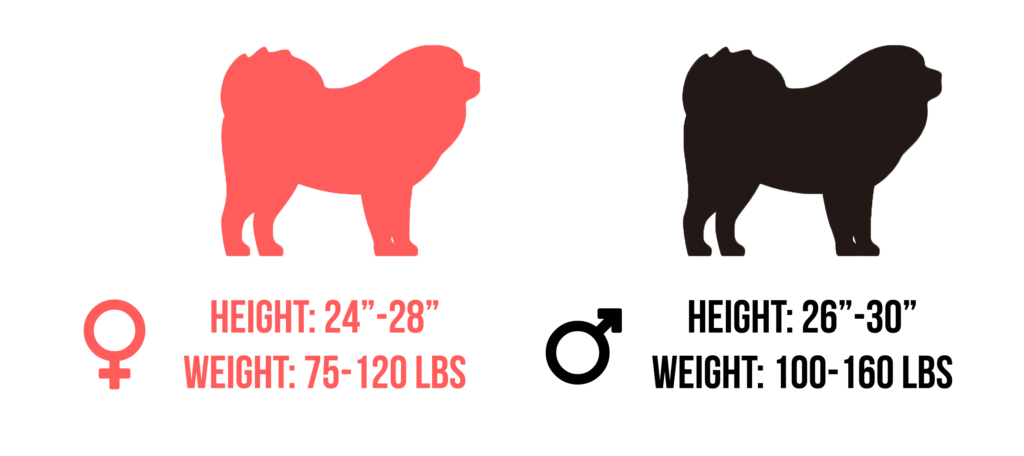 Male Tibetan Mastiffs range from 26 to 30 inches tall and can weigh between 100 and 160 pounds. Females range from 24 to 28 inches tall and can weigh between 75 and 120 pounds.
Male Tibetan Mastiffs range from 26 to 30 inches tall and can weigh between 100 and 160 pounds. Females range from 24 to 28 inches tall and can weigh between 75 and 120 pounds.
Appearance
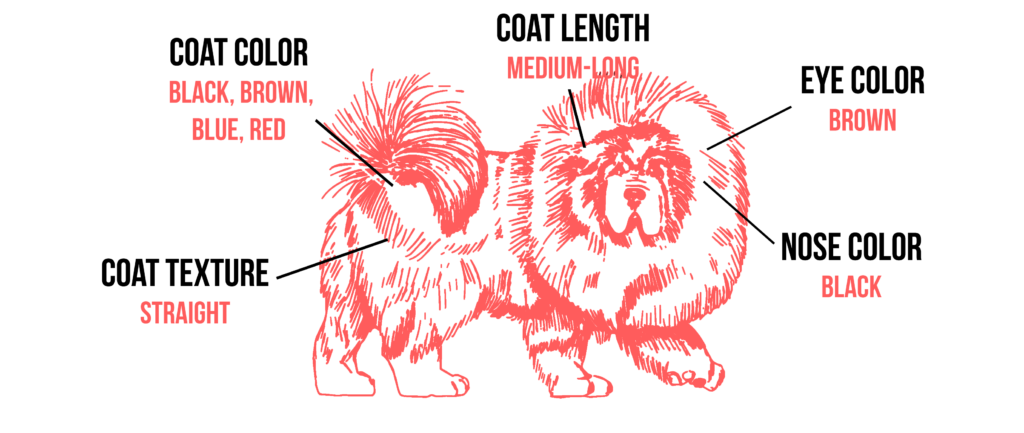 The Tibetan Mastiff is a large dog with an impressive appearance and solemn—but kindly—expression. They are double-coated with a straight, coarse-textured upper coat and heavy, wooly undercoat that sheds in warmer weather. This combination of coat types allows this breed to endure temperature extremes. Males tend to have a heavier coat than females, especially around the neck (the mane) and shoulders.
The Tibetan Mastiff is a large dog with an impressive appearance and solemn—but kindly—expression. They are double-coated with a straight, coarse-textured upper coat and heavy, wooly undercoat that sheds in warmer weather. This combination of coat types allows this breed to endure temperature extremes. Males tend to have a heavier coat than females, especially around the neck (the mane) and shoulders.
The hair of the coat is coarse, straight and hard (never curly, wavy, or silky), standing out from the body. The coat is non-water-repellant and may take some time to dry once wet. It comes in a variety of color combinations such as black, black and tan, blue-gray, blue-gray and tan, brown, brown and tan, cream, cream-sable with white markings, red-gold, and red-gold-sable.
The coat may or may not be found with tan markings above and around the eyes, on the side of the muzzle, on the throat, and on the lower part of the front forelegs, the inside of the rear legs, the breeches and the underside of the tail.
Some TMs have small white markings on the chest and feet but nowhere else on the body. The undercoat may be lighter shades of the dominant color or gray or tan on black and tan dogs. Tibetan Mastiffs with sable or brindle coats are faulted in the show ring, but their color doesn’t affect their ability to be a great companion or guardian dog.
This breed has a sturdy bone structure with a body that is slightly longer than the tail. Its head is slightly wrinkled, impressive, broad, and strong with a muzzle that is square when viewed from all sides. The ears are V-shaped and hang forward close to the head. It has brown eyes that are deep-set, almond-shaped, and slightly slanted, and it has a large, black nose. The upper lip usually covers the lower lip.
These dogs have a muscular, arched neck with a moderate dewlap (which is more prominent in males than females). The topline is level, and its tail and britches (upper thighs) are well-feathered, with the tail being densely coated and carried over the back in a curl. The Tibetan Mastiff stands well up on the pasterns, with strong, tight, cat feet, giving an alert appearance. It may have feathering between the toes. Dewclaws are sometimes removed.
Behavior
Personality
As befitting their long past as a solitary sentry and protector, Tibetan Mastiffs are guard dogs supreme. They are intelligent, courageous, and learn quickly, but are also watchful, aloof, imposing and often intimidating. They are highly protective of their family and property and have a strong-willed streak of independence. Luckily, their guarding instincts are tempered with patience and profound devotion, if well-bred. They are very loyal, but also known for not coming when called.
It’s important that you begin training your Tibetan Mastiff puppy the day you bring her home. Her independent, stubborn nature means strict and formal training doesn’t bring the best results. It will take patience, a firm hand, and consistency to develop a strong bond with your TM. These dogs are very sensitive to emotion, so it’s best to look for behaviors you can reward instead of punishing her for infractions.
Regular training and lots of social interaction will help you and your dog live happily. A bored or lonely Tibetan Mastiff is more destructive and noisy than you would expect. It’s essential to establish yourself as a leader she can respect but without using force, harsh words, or physical punishment. The TM understands consistency and firmness but won’t take abuse. A program requiring puppies to “work” for everything they get by performing a command before receiving meals, toys, treats, or play is a possible method to establish your leadership.
Though housetraining should come easily to your Tibetan Mastiff, crate training can assist in the process and prevent your puppy from chewing on things she shouldn’t or getting into trouble when you aren’t around to supervise. A crate can also act as a safe retreat for her when she feels overwhelmed or tired. To always be perceived this way, though, a crate should never be used as a punishment.
Leash training is important for any dog that could potentially weigh up to 160 pounds or more. Your muscles will thank you for it. Your Tibetan Mastiff should never be walked off leash—its strong will could get in the way of obedience, and you never know when you’ll be in a situation where your TM will decide to protect you rather than listen to you.
Socialization is an absolute must for this breed; otherwise, it can become overly suspicious and unaccepting of strangers, and extremely territorial of its home turf. Taking your dog to puppy kindergarten classes by the time he’s 10 to 12 weeks old can be a great start. Keep in mind that such classes may require certain dog vaccines.
Once your vet gives you the green light, invite people over to your house so your puppy can get used to visitors. Let him meet people at the park, on the street, at the mall, dog-friendly stores, or anywhere else you can safely take him. The more experience your dog has, the better he will respond in different situations to determine who is a friend and who is a foe.
The Tibetan Mastiff is normally quiet and calm indoors but has a deep, impressive bark that it will use freely when left outside, especially at night when they are most attentive. Bringing your dog inside can solve this problem. You can trust that your TM will only bark otherwise if he perceives a threat.
Children & Other Pets
Your Tibetan Mastiff should do great with your kids, especially if she is raised with them. It is often suggested that this breed does best with older children because of its size. Though it would never hurt your children on purpose, such a big dog could accidentally knock over or step on smaller children.
Her size could also cause problems if she were to get excited and start playing roughly with children. It’s better to make it a rule that kids never run and scream in a Tibetan Mastiff’s presence.
There is no doubt that this breed is devoted to its family, but visiting children, especially those who wrestle, roughhouse, or fight with your children, could cause your Tibetan Mastiff to feel like she needs to protect “her” kids. It’s important that you are always there to supervise so your TM knows who’s in charge.
Tibetan Mastiffs generally get along well with other dogs and cats when they’re raised with them. Strange dogs of the same sex, however, can be perceived as a threat and may put your TM on edge. Tibetan Mastiffs are also aloof with strangers and will watch them attentively the whole time they are around.
Health
 It’s important that breeders show you the proper certifications and health clearances for the puppy you are interested in before you buy it. Dogs with these health conditions should not be bred.
It’s important that breeders show you the proper certifications and health clearances for the puppy you are interested in before you buy it. Dogs with these health conditions should not be bred.
Be aware that Tibetan Mastiffs mature very slowly. They will not reach their full size until they are 3 to 5 years old.
Canine Hip Dysplasia
This is an abnormal formation of the hip socket that can eventually cause crippling lameness and painful arthritis of the joints in its more severe form. It’s a genetic trait that’s affected by environmental factors. Hip dysplasia affects up to 16 percent of all Tibetan Mastiffs.
Elbow Dysplasia
Elbow dysplasia is similar to hip dysplasia in that the elbow joint isn’t made right. It affects up to 15 percent of Tibetan Mastiffs and can eventually cause arthritis. Signs include pain and limping. Dogs can take supplements to support their joint health and drugs to help ease pain and inflammation; however, corrective surgery is often recommended.
Canine Inherited Demyelinative Neuropathy (CIDN)
CIDN is a genetic problem that affects the nervous system and causes weakness in the rear legs and eventually complete paralysis.There is no treatment, but selective breeding has greatly reduced the incidence of CIDN. The disorder is evident in puppies between 6 and 10 weeks of age and the puppy will pass away by the time its 4 months old.
Autoimmune Hypothyroidism
Thyroid disease is an endocrine disorder that affects up to 30 percent of the Tibetan Mastiff breed. The thyroid gland makes the important hormones that regulate metabolism, stress, reproduction and other critical functions. Hypothyroidism occurs when that gland is under-producing. Signs of hypothyroidism in dogs can include sluggishness, a dull coat, slow heart rate, and weight gain. Luckily, it’s easily treated with synthetic thyroid hormone supplements.
Epilepsy
Epilepsy is a neurological disorder that causes dogs to have sudden, uncontrolled and recurring seizures. These physical attacks may or may not make the dog lose consciousness. These seizures can happen due to trauma, exposure to toxins, brain tumors, genetic abnormalities, issues with the dog’s blood or organs, or for a number of other reasons.
Bloat
This is an emergency gastrointestinal syndrome that Tibetan Mastiffs are at a higher-than-average risk for. It’s a disease in dogs in which the animal’s stomach expands and then twists around its short axis. Emergency conditions may result as a consequence of this gastric rotation such as progressive distension of the stomach, increased pressure within the abdomen, damage to the cardiovascular system, and decreased perfusion, or the process of delivering nutrients from the blood to the body’s tissues. Symptoms can include anxious behavior, abdominal pain and distention, depression, excessive drooling, and vomiting to the point of unproductive dry heaving.
Persistent Pupillary Membranes
This is an eye disease that occurs when strands of fetal tissue remain on the eye after birth. It can cause discomfort and impaired vision.
Suggested Tests and Certifications
For a Tibetan Mastiff to achieve CHIC certification, he must have evaluations for hips and thyroid from the Orthopedic Foundation for Animals (OFA) and an eye clearance from the Canine Eye Registration Foundation (CERF). An OFA elbow evaluation is recommended but not required.
Maintenance
 Care
Care
The Tibetan Mastiff is a companion dog and his temperament will suffer if he lives outside or in cramped quarters. An apartment is not appropriate due to his bulk and his tendency to dig and climb. He should have access to a large yard surrounded by a sturdy fence at least five or six feet high where he can safely exercise. A small yard or dog run isn’t sufficient for his needs.
The Tibetan Mastiff is a moderately active dog who will need 20 to 30 minutes of play in the yard or a half-hour walk. The AKC says he is extremely independent and intelligent and may have his own agenda, so he should never be walked off-leash. He is not a suitable jogging partner.
Keep in mind that Tibetan Mastiff puppies grow quickly, but aren’t physically mature until they’re more than a year old. Until that time, limit exercise to free play in the yard and avoid long walks to prevent overworking its bones, muscles, and joints during the growing stage of its life.
Like most dogs, Tibetan Mastiff puppies love to chew. However, because of their size, they can do more damage than other breeds. To protect your walls and your furniture, don’t give puppies the run of the house until they’ve reached trustworthy maturity at 3 to 5 years of age. Keeping your Tibetan Mastiff puppy busy with training, play, and socialization experiences is a great way to prevent destructive behavior. Remember: a bored Tibetan Mastiff is a destructive Tibetan Mastiff.
Even as adults, when this breed is confined to a large space they can get bored, frustrated, and destructive. Having another dog as a companion will help your Tibetan Mastiff act independent enough to stay home alone while his owners are at work. When his family is home, he should be indoors with them.
The Tibetan Mastiff breed has a weather-resistant coat that allows them to be comfortable in cold temperatures and surprisingly comfortable in warm, dry climates. However, they are unsuited for hot, humid climates. During hot weather, your dog should always have access to shade and fresh water whenever he is outside.
How much should I feed my Tibetan Mastiff?
It’s recommended that you give your dog 4 to 6 or more cups of a high-quality dog food daily, divided into two meals. To avoid bloat (as discussed in the Health section above), withhold food and water for at least an hour after vigorous exercise.
Remember that dogs are like people and don’t all eat the same amount of food. Size, age, build, activity level and metabolism can affect how much he’ll eat. The quality of dog food you give him will also make a big difference. Better dog food will always go farther in nourishing your dog. To help keep your Tibetan Mastiff in good shape, measure out his food and feed him twice a day rather than leaving food out all the time.
Grooming
The Tibetan Mastiff breed requires moderate grooming and should be brushed weekly to remove dead or loose hair. During the winter months, the coat has an abundance of thick hair which gets shed once a year when the weather gets warm. During this time your dog should be brushed and combed every day. Be sure to check for tangles or mats in the mane, breeches, and tail, where the coat is the heaviest.
The occasional bath, usually no more than once a month, will keep them clean and looking their best. The Tibetan Mastiff does not have a significant odor but a smell may develop near the mouth due to drool. Wipe the drool regularly to prevent accumulation of bacteria.
Trim their nails once or twice a month, or as needed, with a clipper or grinder to prevent overgrowth, splitting and cracking. You’ll know they’re too long if you can hear them clicking on the floor. Short nails keep the feet in good condition and won’t get caught in the carpet and tear.
Check your Tibetan Mastiff’s ears weekly for a buildup of wax, debris, redness, or inflammation that can cause, or be signs of, infection. Clean them as needed with a cotton ball and a recommended cleanser from your dog’s breeder or veterinarian. You can wipe around the outer edge of the ear canal, but don’t stick the cotton ball any deeper than the first knuckle of your finger.
Dental hygiene is another grooming need. Brush your Tibetan Mastiff’s teeth at least two or three times a week, or daily if possible, to remove tartar buildup and bacteria.
Getting your Tibetan Mastiff used to frequently being groomed and examined when it’s a puppy will make future veterinary exams and other handling much easier when it’s an adult. Handle its paws frequently and look inside its mouth and ears. Make grooming a positive experience filled with praise and rewards.
Questions
Would a Tibetan Mastiff make a good guard, and hiking companion?
Yes and maybe. Tibetan Mastiffs are wonderful guard dogs in every sense of the word and were bred to be just that—a guard dog. Since they need moderate activity, TMs would be good hiking companions as long as it’s not very hot and humid outside (their coats weren’t made for that kind of weather) and you keep it on a leash at all times. Since they only need moderate activity, though, they might not be the best companions for long, strenuous hikes.
Are you allowed to own a Tibetan Mastiff as a pet?
Yes! They are even registered with the American Kennel Club.
Is there any difference between Tibetan Mastiff and Mongolian Bankhar dog?
One obvious difference between the Tibetan Mastiff and the Mongolian Bankhar is their origin. As their names suggest, the TM is from Tibet and the Mongolian Bankhar is from Mongolia. Both accompanied nomads and helped with herding and protecting livestock, though the Mongolian Bankhar is said to be more of a working dog than a guard dog. The Tibetan Mastiff is built bigger and heavier than the Mongolian Bankhar, but both breeds have double coats. The Mongolian Bankhar also tends to live longer than the Tibetan Mastiff.
Resources
Rescue Organizations/Groups
Breed Organizations
Top Breeders
- AKC Marketplace
- Comancheria Tibetan Mastiffs Kennel
- Dawa Tibetan Mastiffs
- Valor Tibetan Mastiffs
- Endless Mountain Tibetan Mastiffs
- Noble Legacy TMs
- Himalaya Tibetan Mastiffs
- Aujudon Tibetan Mastiffs
- SINA Tibetan Mastiffs
- Nyingma Tibetan Mastiffs
- CFAR Tibetan Mastiffs
- Drakyi Tibetan Mastiffs
- Sierras Tibetan Mastiffs
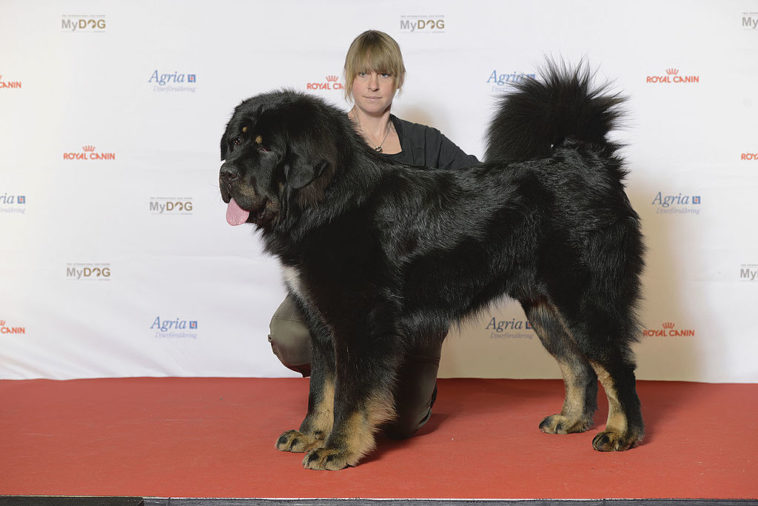
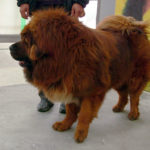
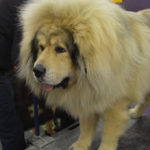
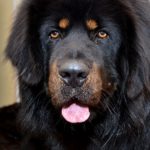

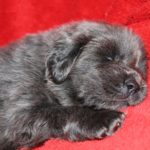
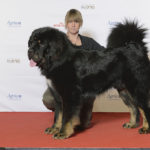
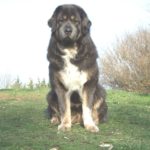
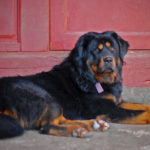
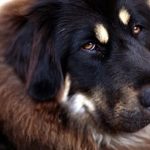
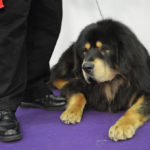

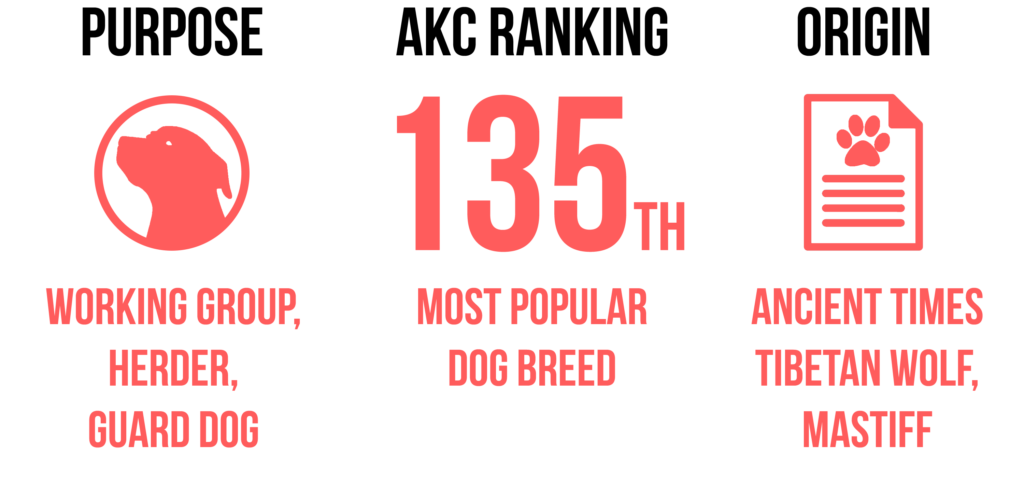 History
History Care
Care